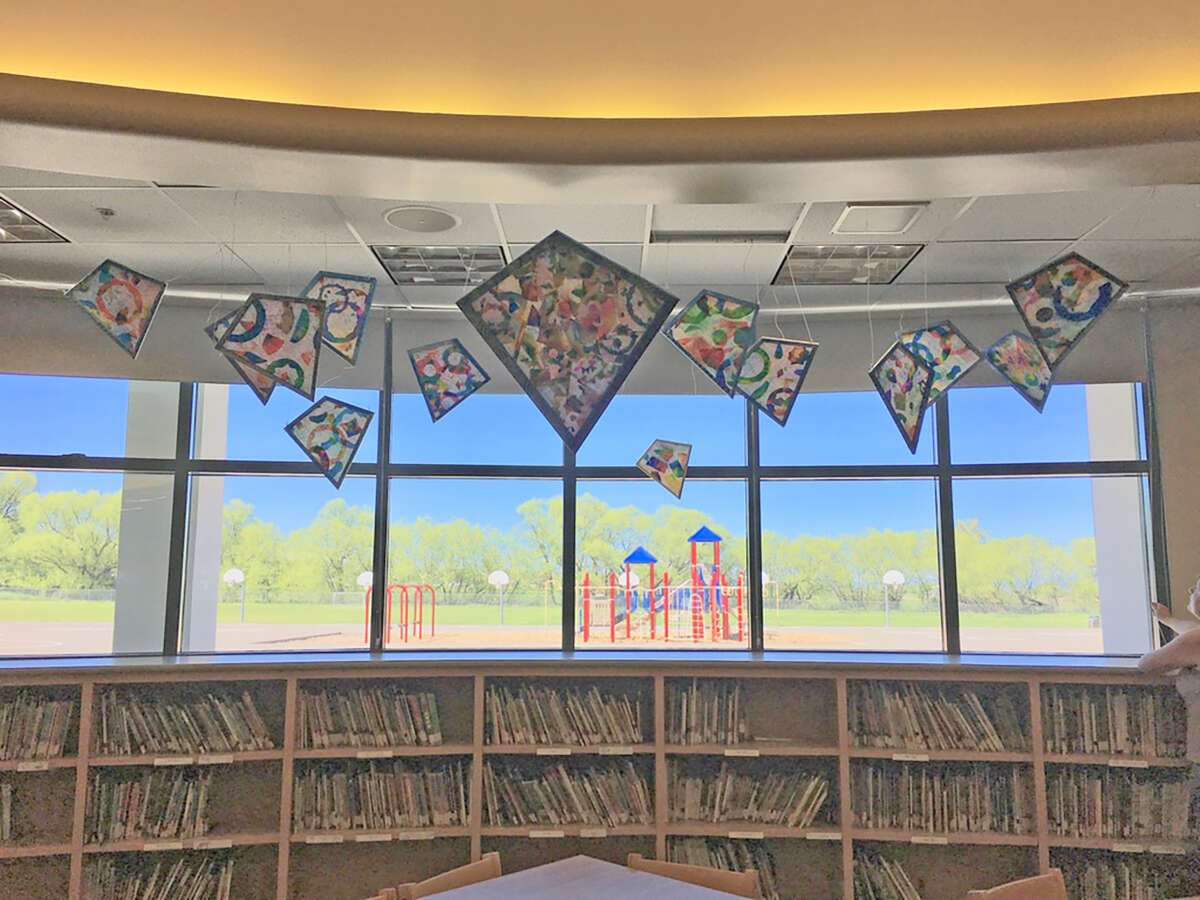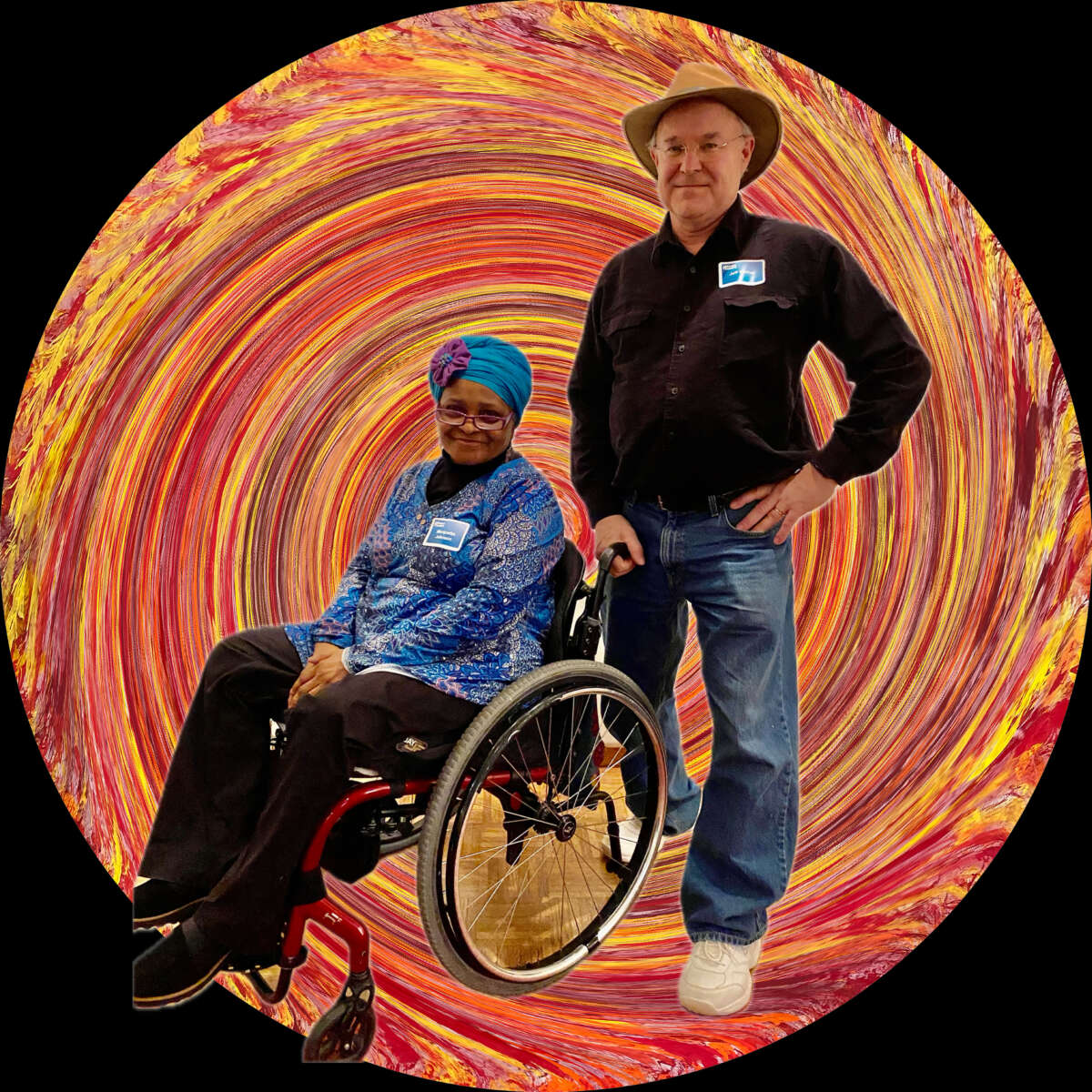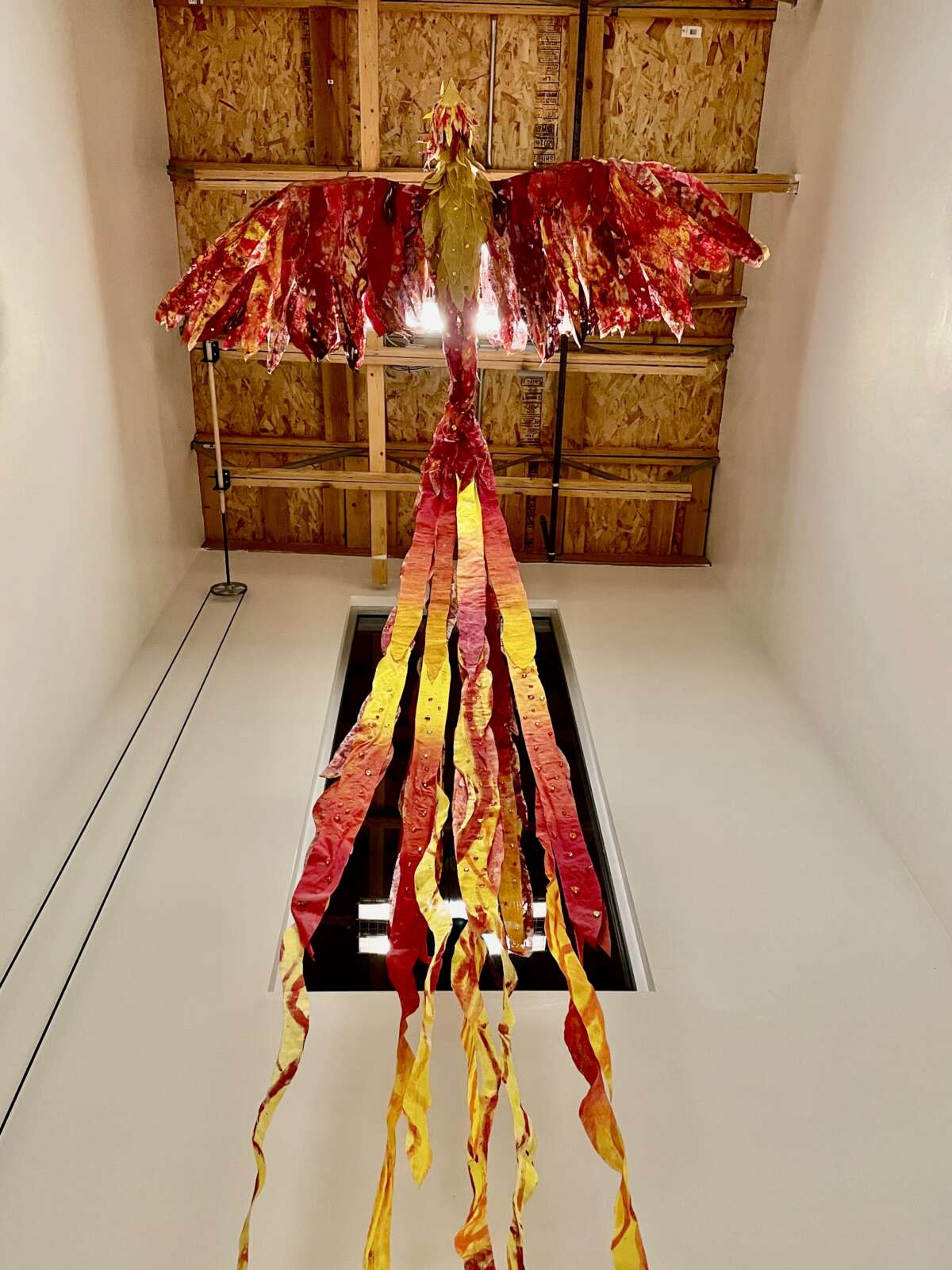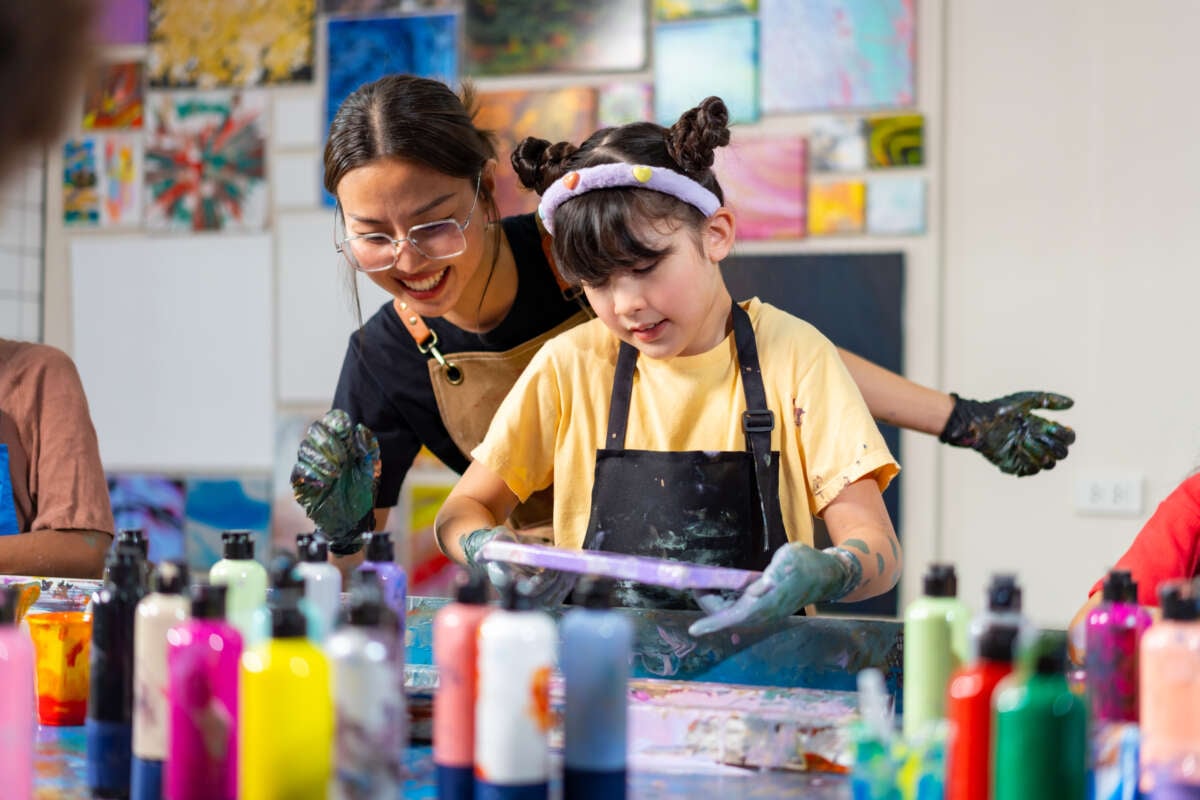Did you know that Truthout is a nonprofit and independently funded by readers like you? If you value what we do, please support our work with a donation.
When Oren Alperin was ready to apply to high school, they knew they wanted to study theater. Now a junior at the competitive Brooklyn High School of the Arts, their coursework has included acting, playwriting and world theater classes on top of more traditional academic subjects.
Alperin loves the school and says that the benefits extend from the personal to the scholastic. “I’ve gotten so much better at leaning on other people and having them lean on me,” Alperin told Truthout. “Nothing I do happens alone, even if I’m doing a monologue. I’ve learned to work with others, learned about other cultures and collaborated with other students to write a play called Midnight Reunion. The piece is about community and trauma, what it means to be a family and how to build relationships. We performed the play in April and the audience came from all over the world but regardless of where they started out, they felt something deep as they watched us on stage.”
Like Alperin, 16-year-old Zavannah Deas is effusive about the school’s theater program. “Being in theater has helped me develop into who I am,” she told Truthout. “It has also helped me understand other people. Knowing theater history and the ways people have performed in other eras and in other countries has been wonderful.”
It’s also uncommon.
According to Erica Rosenfeld Halverson, a professor of curriculum and instruction at the University of Wisconsin-Madison, the availability of arts or aesthetic education (which includes dance, music, the visual arts, theater and creative writing, and straddles the divide between Eurocentric materials and those that are culturally responsive to a diverse student body) is hugely uneven, varying by state and even by districts within states. What’s more, she told Truthout that funding for all types of public school arts education typically fluctuates from year to year, with massive cuts implemented during economic downturns. This trend, she explains, began during the fiscal crises of the 1970s and was later exacerbated by the push for improved standardized test scores, a move that sidelined the arts as expendable. The result was that by 2020, just 19 states included the arts as a key education area.
Then the pandemic came.
“Before COVID, we were at a fairly productive point of the pendulum swing, with the end of No Child Left Behind in 2015 and a more holistic understanding of young people’s lives,” Halverson said. “Legislators and policy people were showing an increasing understanding that the race to perform in content areas was not the best way to ensure adequate, equitable learning.”
COVID, she says, could have been an opportunity to rethink the way we educate young people. Unfortunately, “that was not the direction taken.”
Instead, she told Truthout, the focus has been on a return to basics — reading, writing, arithmetic and sanitized accounts of American history — a focus that ignores the role that arts education (especially if it is culturally responsive) can play in helping kids plug into academics and social and emotional well-being.
Lakeisha Steele, vice president of policy at the 30-year-old Collaborative for Academic, Social and Emotional Learning agrees. “COVID has forced us to think about the value of public education as a public good.” All of the research, she told Truthout, points to the value of the arts. “The arts help us learn to be more than consumers. They teach problem-solving skills, train children to work together and develop empathy for others.”
And for a short time, Steele said, it seemed that the federal government recognized this. She credits the American Rescue Plan that passed in 2021 with putting needed cash into public education, which enabled the temporary expansion of arts programming. All told, $200 billion was allocated; state education authorities were able to use the funds where they were needed most, whether that meant hiring additional K-12 counselors and social workers, providing tutoring and other academic supports, hiring arts instructors, or repairing faulty ventilation or water filtration systems. The earmarked monies, Steele said, were meant as a short-term cash infusion and all funds must be spent by the end of December 2024 unless an extension is granted.
“Since the money stopped flowing, states are once again questioning the value of the arts in a well-rounded education,” she said. “The educational disinvestment that followed the 2008 recession is now reemerging. We’re at a deflection point and, once again, low-income communities are at risk of losing their school-based arts programs. Before- and after-school programs often help, but not every child attends them.”
At the same time, Steele cautions against pitting standardized testing against the arts. “Data from testing can help us understand where the learning gaps are, but we have to use the data to support students and their teachers. Data should not be used to support arts disinvestment,” she said.
Touting the Benefits of the Arts
Like Steele and Halverson, numerous organizations sing the praises of arts education and note that these benefits are especially important in the aftermath of pandemic school closures.
“Students missed a lot of social development and they’re suffering from that now,” Word In Black, a collaborative of 10 African American newspapers, reports. “As we look at the long process of recovery, we can be confident that the arts will facilitate emotional well-being, connect students with friends and teachers, and foster resiliency.”
Why then, do only 69 percent of middle school and 47 percent of high school students have arts education integrated into their studies, a reality that leaves 2 million school-aged kids with no arts instruction whatsoever?
While parents with resources can send their kids to programs that supplement in-school learning — and can often raise outside funds for more expansive training — the disparities result in a predictable conclusion: The Hechinger Report notes that low-income Black and Latinx students received 40 to 49 percent less exposure to the arts than their better resourced peers. The upshot is that schools without robust arts classes have higher rates of disciplinary interventions, lower attendance rates and higher dropout rates than schools with them.
Moreover, study after study confirms that the arts enhance student engagement, help children develop better interpersonal skills, including the ability to handle criticism and improve focus. In addition, arts exposure allows kids to experiment, learn through creative play, and at least temporarily forget about grades, test scores and outcomes. They can also give students a window into, and an appreciation for, a wide variety of cultures (including their own and their classmates’) especially as schools move away from Eurocentric models and expose students to the art, music, theater and storytelling from throughout the world.
So how do we increase school-based arts education?
One solution is electoral reform, to date utilized only by the state of California. Proposition 28, The Arts and Music in Schools Funding Guarantee and Accountability Act, passed in 2022, requires every public school in the state to provide arts programming.
“California voters made arts education a priority,” Randi Weingarten, president of the American Federation of Teachers, told Truthout. “Implementation has been uneven which is why a lawsuit has been threatened. Still, we are recommending this approach – voter referenda – to other states as a way to guarantee that every kid has access to the arts.”
Teaching Artists Fill Gaps
In the wake of fiscal cutbacks (which are, of course, a priority choice), a host of supplementary programs have been developed to bring arts into schools when there are no full-time arts instructors on staff. Programs range from tiny projects that visit schools several times a year to large-scale, structured programs that allow teaching artists to develop ongoing relationships with students.
Georgia sculptor Jeff Mather has been working as a teaching artist (TA) since 1992 and currently works in a STEAM (science, technology, engineering, art and math) program at Drew Charter School, a public pre-K to 12th-grade program in the East Lake area of Atlanta that enrolls 1,800 students. The program has been well-funded via private money from corporate and individual donors since the school’s founding in 2000, allowing Mather to be in the school for 45 days a semester. “I do large-scale architectural sculptures, massive works,” he told Truthout. “At one point, I was paired with a geometry teacher. The students I worked with designed a device called a pantograph that can be used for enlarging an image.” Other projects have incorporated robotics into sculptures.

“At Drew,” Mather continued, “academic subjects are taught through the arts and there is a lot of cross-fertilization between dance, performance, art and music. This allows students to present their learning in ways that are unexpected and unorthodox.”
Mather also works in a second public school, this one in Logan, Utah, where he collaborates with fabric artist and quilter Marquetta Johnson. Over time, the pair’s work has evolved and now incorporates social and emotional learning. “During one of our post-COVID residencies, a storyteller was brought into a 6th-grade classroom while we were there. At the beginning, the kids were being jerks to each other but they had decided that their theme for our collective project would be the phoenix. Jerry, the storyteller, asked them to talk about a time they’d personally crashed and burned but later rose. When the kids came out of the room where the discussion took place, I saw many of them wiping away tears. They had really listened to each other and related to what they’d heard.”

After this, staff worked with the kids to write down the stories they’d told; they later burned the papers and placed the ashes into the heart of a bird they’d created. “A young engineer we met volunteered to help the kids create a pulley so that the phoenix, which has a seven-foot wing span, could ‘fly,’” Mather said.

Although the resources of these programs give students opportunities that other kids do not have, numerous school districts throughout the U.S. have raised money from foundations and businesses to supplement government allocations. In some places, PTAs and parent groups have brought in considerable sums so that nonprofit groups – including museums, cultural institutions and community-based arts activist organizations – can provide instruction to students.
Iowa-based theater artist Laura Epperson is part of the Kennedy Center’s Turnaround Arts Program, which brings programming to low-performing schools — and low-income students — in every corner of the country. But even this can be fraught. “When we’re able to go into a school once a week for the full year, we can see meaningful growth in students; but when a project is more limited, bringing us in four times during the year, it’s harder to see the impact. Arts education necessitates an investment, which means ongoing interactions with students.”
Despite this, Epperson knows that arts education can have a profound impact. “In one school, the teacher was doing a class about Christopher Columbus, and as an activity she asked the students to think about what they might have felt if Columbus had arrived on the land their people had lived on for centuries. The assignment gave the students a way to add nuance to the story.”
As she speaks, Epperson’s enthusiasm for the work is evident. Nonetheless, she makes clear that she and other teaching artists deserve and need job stability. “You always need to be in hustle mode if you’re a teaching artist,” she said. “Being a part-time TA is right for me, but if a principal or school superintendent is not invested in this work, it means that children will not be exposed to the arts, and it means that teachers will not be able to rely on us as a resource.”
Like Epperson, Jody Drezner Alperin (Oren’s mom) has a long track record as a teaching artist. As the co-founder of the Off The Page Theater program, she has brought workshops into public schools throughout New York City. “Schools are under ridiculous pressure to do a long list of things and many are reluctant to add teaching artists to what they’re already doing. But this can be detrimental, especially if there is little to no arts education offered,” she told Truthout. “In one of the Brooklyn schools we worked in, the students adapted Jason Reynolds’s novel, All American Boys, for the stage. The story is about police brutality, and one of the students spoke passionately, stating that the play should make the audience uncomfortable.”
Like other arts educators, Drezner Alperin is adamant about the value of the arts. Exposure to dance, theater, music, the visual arts and creative writing, she said, helps students find their place in the community. “Students don’t learn this from having more police in schools,” she said. “The arts should be on par with math, English and science. We should not have to fight for their inclusion every single year.”
Press freedom is under attack
As Trump cracks down on political speech, independent media is increasingly necessary.
Truthout produces reporting you won’t see in the mainstream: journalism from the frontlines of global conflict, interviews with grassroots movement leaders, high-quality legal analysis and more.
Our work is possible thanks to reader support. Help Truthout catalyze change and social justice — make a tax-deductible monthly or one-time donation today.
